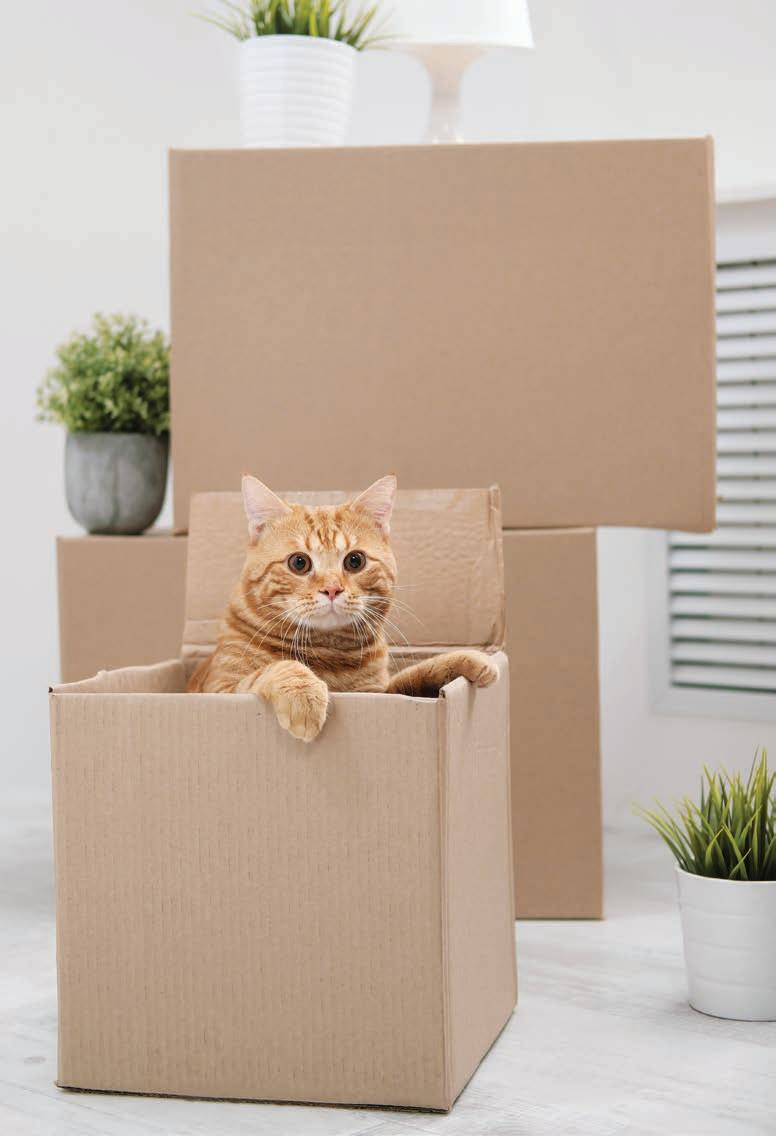
3 minute read
Minimize the Stress of Moving to a New Home

ISTOCKPHOTO/LIGHTFIELDSTUDIOS
Minimize the Stress of Moving to a New Home
Advertisement
By Valerie Masi, Best Paw Forward
Moving is a stressful time for people, and it’s a stressful time for pets as well. In fact, in the overall scheme of life’s stressors, it is right up at the top of the list. You’re trying to move your whole life to another home and, at the same time, you’re almost certainly continuing to balance both your work and home life, dealing with all the usual everyday stresses. But you do have some measure of control over just how exasperating this move will be—a few strategic and sensible decisions at the beginning of the process can make a world of difference for you, which will translate into a calmer, easier move for your pets.
Start by making a good plan, and begin executing that plan early. Whatever you do, don’t put off all the things you need to do before you move until the last minute. Plan to start packing about 30 days in advance, doing a little bit every day, starting with the things you use the least often. Or, alternatively, set aside a couple of weekends to pack two or three rooms each weekend—breaking the job up into pieces will make it feel much less daunting.
Next, take all the steps you can to keep your pet calm and feeling secure while all this packing is going on. Put yourself in their place—they don’t understand what’s happening … they just sense all the anxious energy and see things being put in boxes. Their usual routines are now a thing of the past, and this creates confusion for your pet, which is displayed through anxiety and fearful behaviors.
Often, dogs and cats will act out, and this can take various forms. Some of the cat behaviors you may witness are hiding, urinating in the house, and destructive behavior, such as clawing the furniture or drapery. Dogs may demand more of your attention, bark more, and also become destructive, tearing up the garbage or stealing and chewing items they would normally ignore.
So how can we help our pets make this important transition go more smoothly? First, and most importantly, keep their normal routines in place as much as you possibly can. This is important to both dogs and cats, because for pets, routines equate to security and self-confidence. To help your pet assimilate to the new neighborhood, you may want to start taking short walks with your dog there (if possible), to help him become more comfortable with the new sounds and smells.

ISTOCKPHOTO/MIKHAIL SPASKOV
Cats do better if you start them in one room—I suggest the bedroom—where they can be with you and get used to one smaller space to start with. Once most of your things are unpacked and you’re starting to settle in, take the cat’s blanket and wipe her scent in various spots around the house. When you’re ready, let your cat out during the quietest time of day to explore. The areas you’ve “marked” with your cat’s scent will help keep her calm and let her know that this space is hers, too. Make sure you set up her feeding area, bed, and cat tree or other structures right away. The sooner her environment is set up, the better. And before the move, while you’re packing, be sure to keep the structure in place as long as possible throughout the moving process. Make this one of the last pieces to be moved out of the house, at least while the cat is still with you in your original home. On moving day, it’s best to take your pets to a family member’s home or a daycare facility where they are comfortable. Removing your pets from the hectic, sometimes chaotic atmosphere of a move will help ensure that your pets stay safe and there is no possibility of them accidentally getting lost, inside or outside.
If you’re having trouble helping your pet adjust to your recent move, contact a professional trainer—they can help settle them in so all of you can enjoy your new home together. ble), to help him become more comfortable with the new sounds and smells.
Valerie Masi, owner of Best Paw Forward, can be reached at (760) 885-9450 or visit bestpawforwarddogtraining.com.



